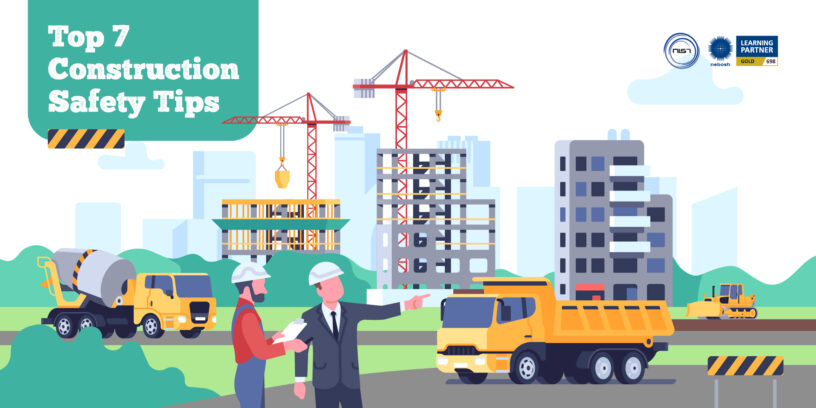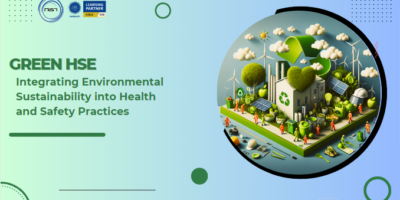Construction sites can be totally unsafe locations if basic safety precautions are not implemented. Various risks, including those posed by machinery, electrical hazards, and falling objects, put workers at risk of injury. Additionally, if they are not aware of the potential risks, site visitors may also be in danger. To ensure everyone on the job site is safe, it is crucial to review and update safety procedures.
This blog will present the top seven vital construction site safety tips. These guidelines will assist to reduce the likelihood of accidents and injuries, making construction sites safer for workers, visitors, and the general public. Whether you’re a construction site manager, worker, supervisor, or visitor, these recommendations will help you stay safe on the job.
1. Fall Protection
Workers must be protected from falls into openings like lift shafts, skylights and excavations as part of fall protection. Employers are also required to provide workers with hard caps, toeboards, screens, or guardrails, as well as to install canopies or barricades to keep them out of the work area and protect them from falling debris.
Employers must offer fall prevention measures to keep their employees safe while walking or working on areas with unprotected edges or sides six feet above a lower level. Guardrails, net safety systems and personal fall arrest systems can all be used to defend against falls. Guardrails are the only mechanism allowed for truly preventing falls. Personal fall arrest systems and safety nets keep workers from falling a long distance.
2. Scaffolds
When working on, under, or on a scaffold, hard helmets should be worn. When working on scaffolds, workers should also wear durable, non-slip work boots and utilise tool lanyards to prevent slips and falls and to safeguard workers below. Never work on scaffolding that is covered with ice, water, or dirt. When working on a scaffold, workers are not permitted to use ladders, boxes, or other objects to enhance their working height.
When working on scaffolds, workers should never exceed the maximum load. At the end of a shift, never leave tools, equipment, or supplies on the scaffold. Workers should only climb scaffolding at access points to reach the working platform. Once the worker is on the working platform, tools and materials should be lifted there.
3. Ladders & Stairways
Before each use, a qualified person should inspect all ladders. Ladders that are defective ought to be identified or tagged out and removed from service until they are fixed correctly. Workers need to receive training on ladder safety and how to choose the best ladder for the task. On the building site, all ladders must adhere to safety regulations. This covers custom-built ladders, permanent ladders, and portable ladders—both self-supporting and non-self-supporting. Ladders should have nonconductive side railings if employees utilise powered electrical equipment.
4. Personal Protective And Life Saving Equipment
Workers must be given and required to wear face and eye protection, when flying particles, liquid chemicals, molten metal, acids or caustic liquids, chemical gases or vapours, or potentially harmful light radiation pose a risk to the eyes or face,. These risks are prevalent when performing different operations on the job site, such as drilling, welding, chipping, grinding, sanding, masonry work, and woodworking. When there are flying item hazards, eye protection must have side protection or even detachable side protectors.
5. Head Protection
Workers are expected to wear head protection everywhere as there is a risk of being struck in the head while being in a construction site. Possible circumstances include interaction with electrical risks, falling tools or debris, unintentional nail gun discharge, and swinging construction equipment. Hard helmets should be checked by workers for any dents, cracks, or other symptoms of wear and tear. Hard helmets ought to be securely fastened to your head and should not move around or slip off while you’re working.
6. Hazardous substances
Employers must put in place a written hazard communication plan that contains a list of all dangerous substances utilised on the premises. Hazard warnings and labels must be present on all containers containing dangerous materials. Each hazardous material should have an MSDS available to employers. Employees should receive training on the risks associated with any hazardous materials as well as guidelines for safe handling.
7. General Health & Safety Provisions
Employers are required to put safety measures in place to safeguard workers and avoid mishaps. It is necessary for a competent individual or individuals to conduct inspections of work locations, machinery, and supplies. This includes making sure that non-compliant tools and equipment are removed from the work area or locked and tagged out. Any appropriate general industry standard that is comparable to a construction standard shall be superseded.
Employers are required to train all employees on hazards and any other related topics for construction requirements pertaining to a worker’s job obligations, in addition to supplying appropriate PPE to employees at no cost.
Construction Safety Audit & Construction Safety Training @ NIST Global
Depending on your requirements, NIST Global offers specialised construction safety training and audits. We are one of India’s top safety organisations and offer excellent safety services.
For Construction safety audit / training, kindly call our experts @ +91 8754465588 or mail us @ info@nistglobal.com














Leave a Reply